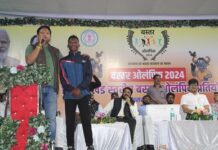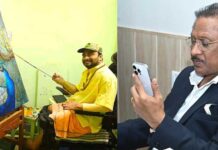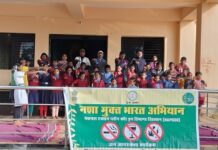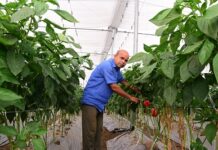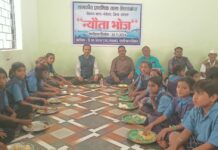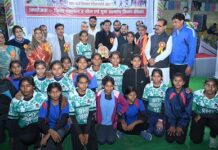Guwahati: Prime Minister Narendra Modi on Friday formally inaugurated India’s longest bridge – the 9.15-km bridge connecting Dhola and Sadiya across the Brahmaputra – at Dhola, and named it after the legendray Bhupen Hazarika by saying that the latter was not only born by the great river at Sadiya, but had also sung his entire life to spread the story of the river across the world.
 ”Our government has decided to name this bridge after Bhupen Hazarika, the mahapurush who was born by the Brahmaputra here at Sadiya and sang the glory of the river in his numerous songs not only across the country but also all over the world. What better tribute can we give to the legendary artist and singer but name this bridge in his birthplace after him?” Prime Minister Modi said. The new bridge on the Brahmaputra is situated 550 kms east of Guwahati.
”Our government has decided to name this bridge after Bhupen Hazarika, the mahapurush who was born by the Brahmaputra here at Sadiya and sang the glory of the river in his numerous songs not only across the country but also all over the world. What better tribute can we give to the legendary artist and singer but name this bridge in his birthplace after him?” Prime Minister Modi said. The new bridge on the Brahmaputra is situated 550 kms east of Guwahati.
Modi, who took a walk on the new bridge, first alone and then with Assam chief minister Sarbananda Sonowal, union road transport minister Nitin Gadkari and state governor Banwarilal Purohit, after a drive to the other end, however did not forget to take a dig at the Congress for the delay in its completion.
”It was our then MLA Jagadish Bhuyan who wrote the first letter to the government in May 2003 for a bridge here. Immediately afterwards the Atal Behari Vajpayee ordered its feasibility study. Had the Vajpayee government come to power again in 2004, and had Congress not wasted 10 years in between chanting hoti hei and chalti hei, this bridge would have come up ten years ago and the people’s dreams would have continued to remain as dreams,” Modi said. He also claimed that while projects were not moving and funds were not being spent in 15-20 years in the Northeast, the present government has begun completing them in two to three years.
“This bridge will not just save time and money, but also trigger off a new economic revolution in Assam, Arunachal Pradesh and the entire Northeast. It will open up doors for economic development. The farmers of Sadiya, for instance, will now get access to the global market to sell the finest quality ginger that they grow,” he said.
Stating that his government’s primary stress has been on creating infrastructure that included roads, railways, aviation, waterways and bridges, Prime Minister Modi said he believed in giving permanency to development. ”Balanced development is possible if we create the twin rails of physical and social infrastructure. We don’t believe in temporary measures. Instead, we want to fulfil those dreams which can take the country forward with permanent development,” he said.

On the Northeast, Modi said that his government believed in development of the Northeastern region in order to bring about allround development of the country. ”The East and Northeast have to develop in order to fulfil the dreams of taking India to new heights of development. The Northeast has that strength to do wonders, with just the right kind of push, and we are committed to give that push,” he said.
”Our government is trying to convert the Northeast into the hub of economic activity for the entire South-east Asia region. Once we put up world-class infrastructure here, this region of India will definitely get converted into the epicentre of development of the entire South-east Asia region,” Modi said.
The prime minister also called for attracting tourists from the world over to the Northeast. ”By creating better infrastructure we are not only connecting the Northeast to various corners of the country, but also facilitating travel to the region from all over. If lakhs of people start coming to see the Kamakhya Temple, Kohima and other tourists spots here, it will give a huge boost to the region’s economy and make it a major tourist hub of the country. After all, the Northeast is today’s our biggest natural resource to attract tourists from all over the world,” Modi said.



